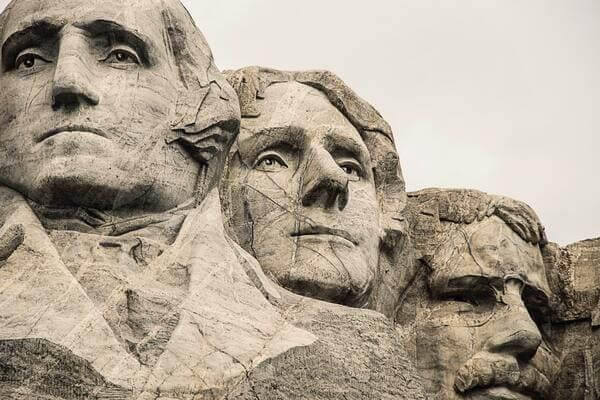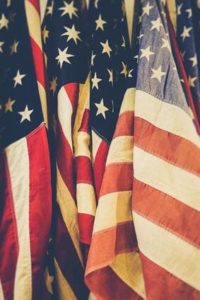
Up until the last century, hemp maintained its role as one of the most significant crops for early societies. Its popularity was undisputed across continents and generations, and historians suggest that it was probably the earliest plant cultivated for textile fiber. Archaeologists even found a remnant of hemp cloth from ancient Mesopotamia dating back to 8,000 BC!
More recently, hemp played an essential part in the growth of early American colonies and hemp goods remained widely in use for a range of purposes for over 300 years.
Here we glance back at how hemp was intertwined with early America and the role the plant played in fuelling growth – before falling victim to competition and negative press.
Coming to America
Although there is some dispute among historians, many believe that hemp’s presence in North America pre-dated the arrival of European settlers.
In the 16th century, Jacques Cartier wrote that the land was “frill of hempe which groweth of itselfe, which is as good as possibly may be scene, and as strong.”

But by the time that the British empire’s expansion reached the shores of North America, hemp’s presence on the continent was in full swing. Early English settlers landing in Jamestown, Virginia brought hemp over from England to be grown in the new colony for making make rope, sails, and clothing, and other things.
With colonization, the British relied on early settlers to expand their stores of the prized plant, mandating all colonists to grow one acre of hemp on their property or be fined. In fact, a royal decree in the 1600s mandated all Jamestown property owners to grown hemp for export. Similar degrees later came in Massachusetts and Connecticut.
The British Crown’s reliance on hemp in that period cannot be overstated. According to Nicola, the British Navy required the processed equivalent of 10,000 acres of hemp just to keep a portion of the fleet operational, or for a single ship, 120,000 pounds of hemp fiber. By the mid-1700s, the surging demand had created a booming and widely dispersed hemp industry in the colonies.
In the 1760s, founding father George Washington predicted that hemp would surpass tobacco in value and usefulness, and famously planted seed on his Mount Vernon farm. He grew industrial amounts of hemp and used the plant’s fibers to repair the large nets vital to his Potomac River fishing operation.
Post-Revolutionary war, when he took his place as the new Republic’s first president, hemp was even used as an early form of currency. “Hemp could be used to pay taxes because the value of the plant was so prized in supporting the growth of the country,” said Nicola.
Evidence of the plant’s popularity lies in the names of towns scattered around the east of the country: Hempstead, New York; Hemphill, Kentucky; and Hempfield, Pennsylvania. As eager cannabis fans gleefully point out, in 1776 the United States Declaration of Independence was even drafted on hemp paper.
The Beginning of the End
It wasn’t until the mid-20th century that things started to take a turn for the worst as attitudes towards hemp began to shift, bringing with them decades of prohibition.
Although hemp was a major player in early America, it was eventually overshadowed by cotton. When the mechanical cotton gin was invented in the late 1700s, cotton processing became cheap and easy and hand-processed, labor-intensive hemp couldn’t keep up with modern commercial production.
Hemp’s next public relations crisis came during the 1930s, with the rise of large and powerful industries that saw hemp as a major threat. New petroleum-based synthetic textile companies like DuPont and newspaper barons like William Randolph Hearst sought to undermine hemp’s popularity through smear campaigns.
Hearst, for example, used his media empire to demonize hemp, linking it with marijuana, unwanted immigrants, and creating “Reefer Madness” propaganda films to create panic and fear. DuPont had a vested interest in hemp’s demise as it used petrochemical and synthetic technology to patent goods like oil, carpet lining, and construction materials – all products that had previously been made using hemp.
War-time resurgence
Nevertheless, hemp briefly returned to popularity for a brief stint in the 40s as fiber needed to fuel WWII missions was in short supply. Hemp was essential for the war effort as it could be used to make ropes, bootlaces, and parachute webbing. The US Department of Agriculture even launched the Hemp for Victory campaign to encourage US farmers to grow the crop.
However, the campaign and support for hemp’s utility were quickly erased from public memory, and in just a few short years, hemp was again regarded with distrust.
Then till Now
In 1970, President Richard Nixon signed into law the infamous Controlled Substances Act. It classified hemp, alongside cocaine, heroin, methamphetamines, and marijuana as a “Schedule I substance,” meaning it had no medical value and a high potential for misuse. For the next several decades, the law and stigma remained, disallowing research and industrial use. Although a few states technically allowed the production of commercial hemp, farmers remained at risk because the plant was still illegal under federal law.
Finally, the passage of the 2018 farm bill returned hemp to a more rightful place in American society. The law permitted the use of hemp and drove growth, leading us back to where we began
History does often seem to move full circle, and hemp—hundreds of years later—is again being recognized as the valuable, versatile commodity it is. From bedding to biofuel, shoes, and protein powder, hemp is back in full swing.

Recent Comments